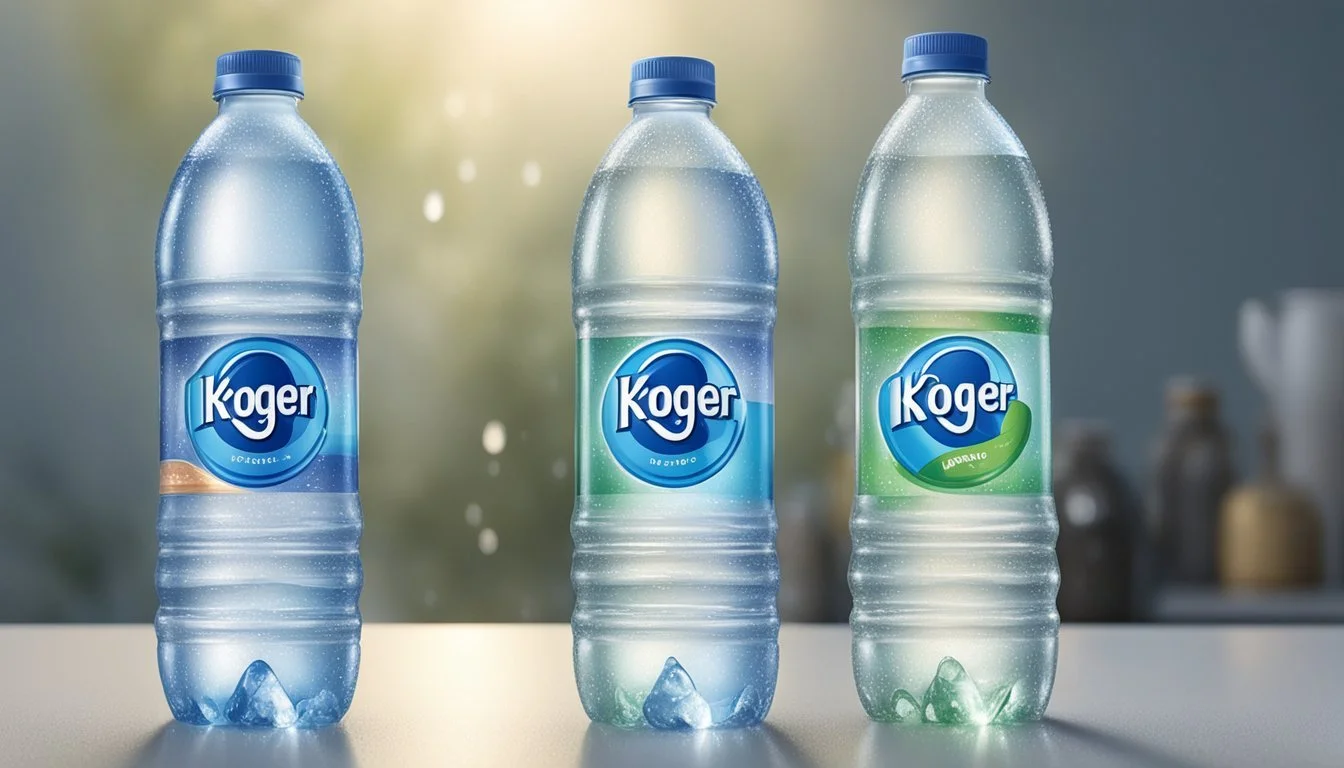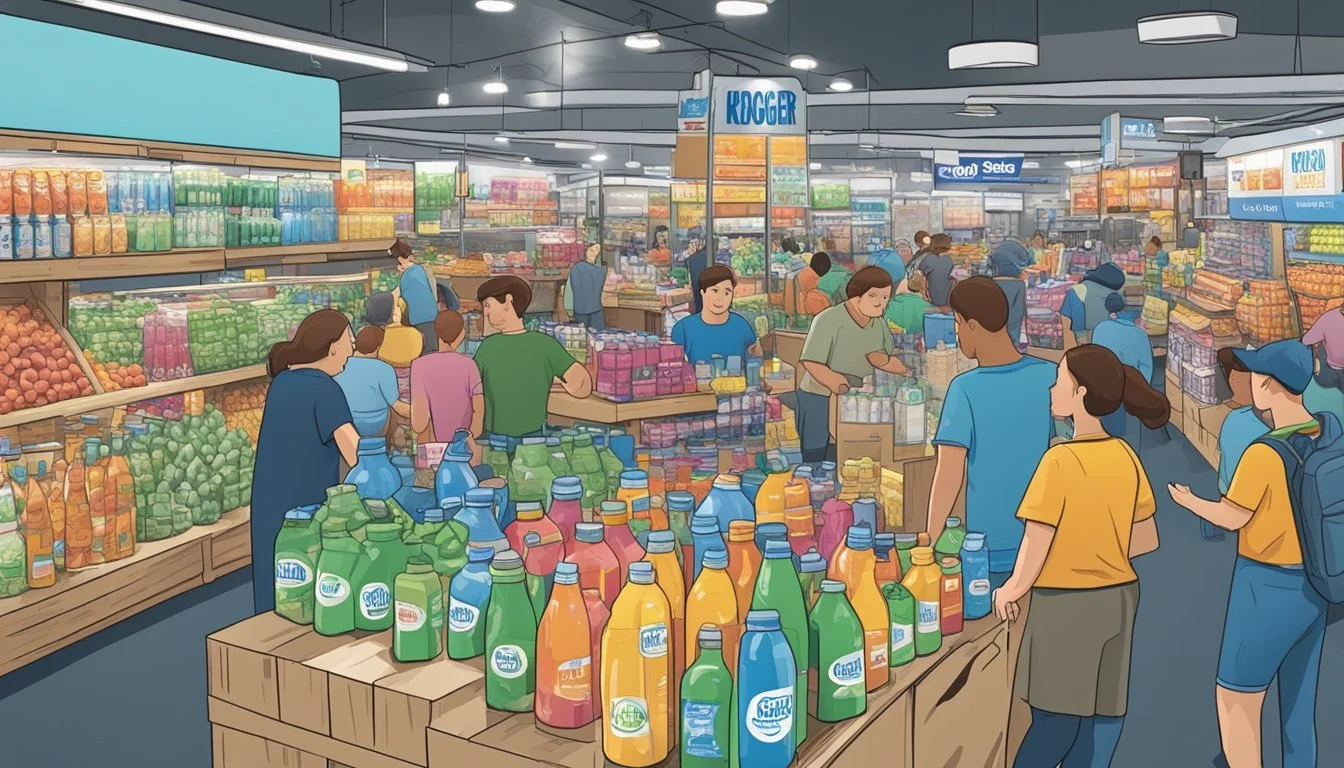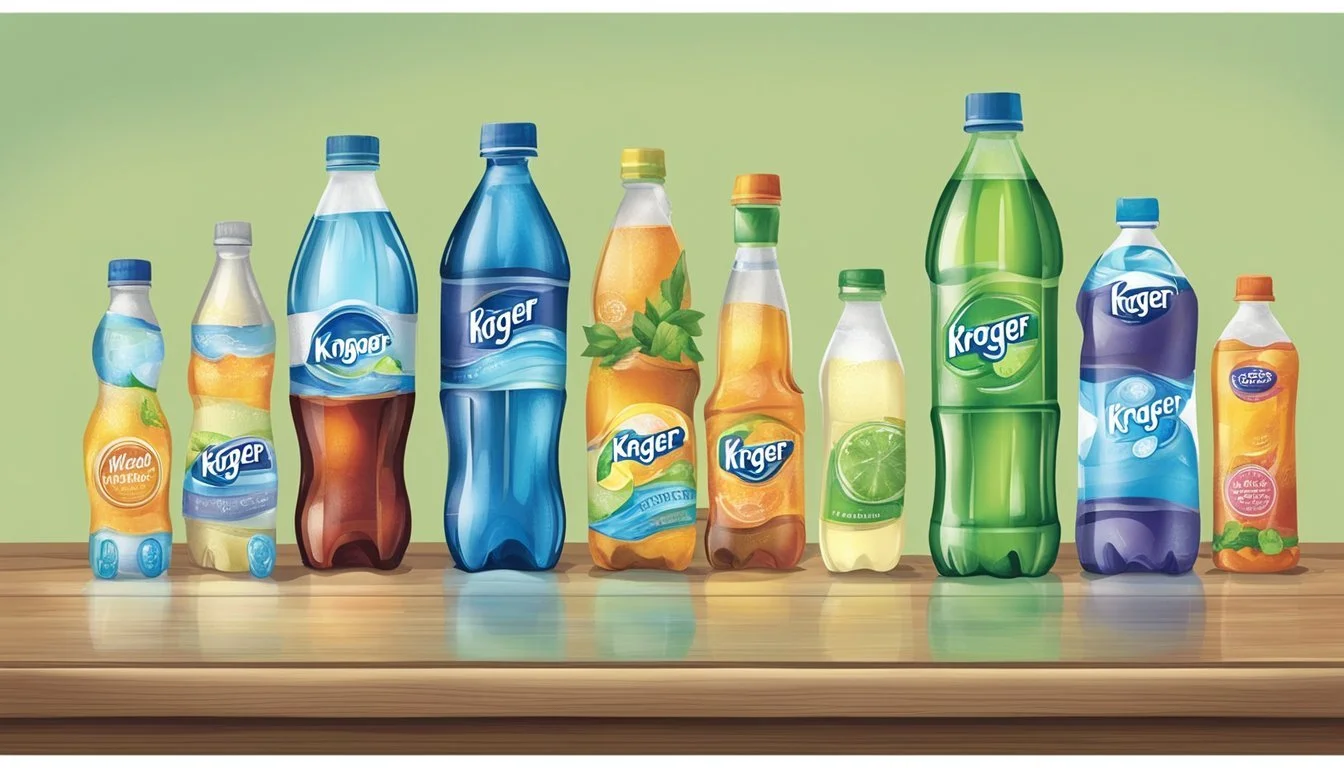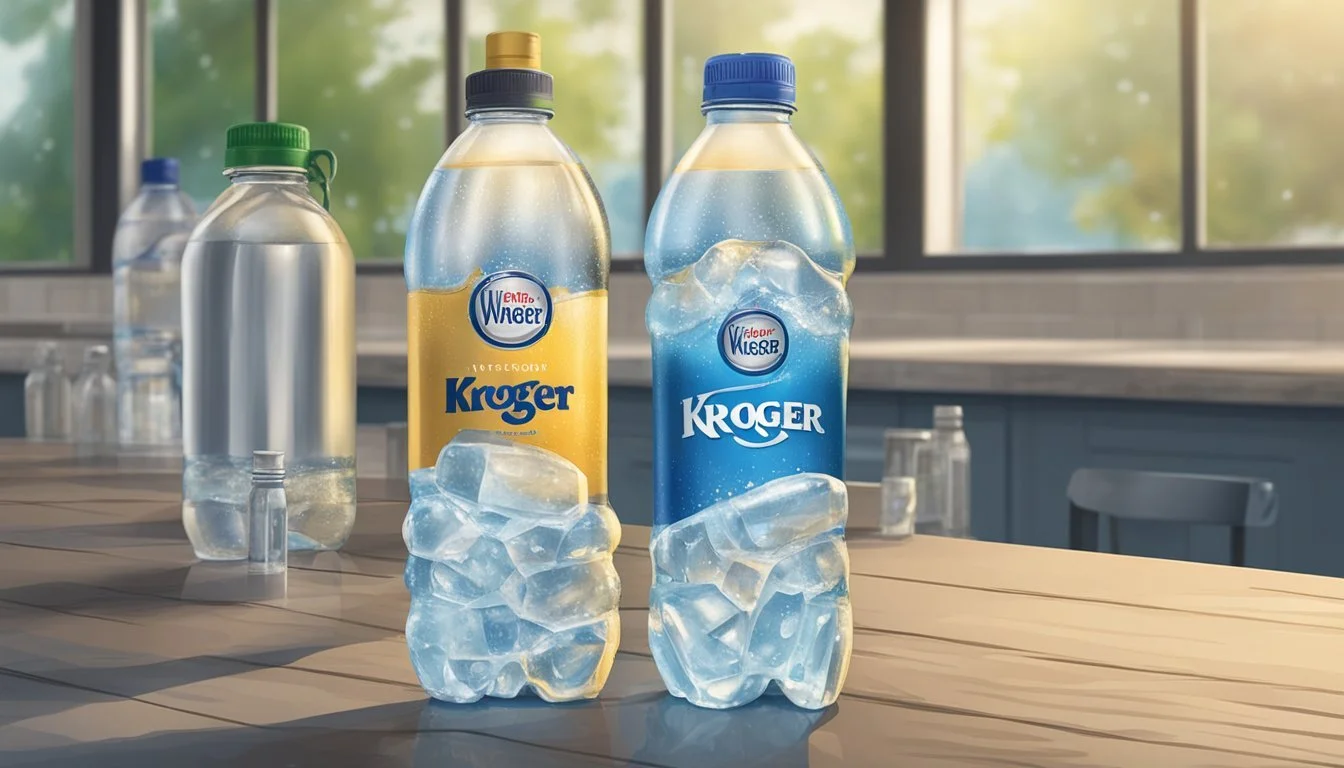Kroger vs. Weird Water
Choosing the Superior Bottled Water
When it comes to choosing bottled water, the options can be overwhelming. From well-known brands to store-specific names, each boasts its own set of qualities. In this comparison, we will pit Kroger bottled water against Weird Water to determine which is better.
Kroger, a brand that adheres to FDA regulations, ensures safety and quality in its bottled water. Kroger's bottled water meets safety standards and often offers BPA-free bottles, addressing common health concerns. On the other hand, Weird Water sets itself apart with unique sourcing and possibly lesser-known origins, aiming to deliver a distinctive taste experience.
Environmental impact is another crucial factor. Both brands face scrutiny over the use of plastic bottles and associated pollution. While Kroger's commitment to quality is commendable, Weird Water's focus on unique flavors and sources might appeal differently.
Overview of Bottled Water
Bottled water is a popular choice for many consumers seeking convenience and hydration on the go. It comes in various types, including spring water, purified water, and mineral water.
Health and Safety
Consumers often choose bottled water because it's perceived as safe and clean. Most bottled water brands adhere to regulations ensuring safety and quality. However, some concerns about contaminants like microplastics and BPA exist, even though many bottles are now BPA-free.
Hydration
Bottled water is an essential aspect of maintaining good hydration, especially when access to clean tap water is limited. It provides a reliable source of hydration during physical activities, travel, or emergencies.
Environmental Impact
The environmental impact of bottled water is significant. Plastic bottles contribute to pollution and waste, leading to environmental degradation. Recycling efforts and choosing reusable bottles can help mitigate some of these issues.
Brands and Choices
There are numerous bottled water brands available, each with distinct qualities. Some are sourced from natural springs, while others are purified tap water. Labels often provide information about the source and type of water, helping consumers make informed choices.
Consumer Preferences
Taste, convenience, and perceived health benefits are primary drivers for bottled water consumption. Consumers may prefer bottled water due to its taste, lack of impurities, and the convenience of portable bottles.
Bottled Water Quality and Regulations
Choosing bottled water involves evaluating multiple factors, including the assurance of quality, regulatory standards set by the FDA, and international guidelines.
Assurance of Quality
Kroger bottled water adheres to strict quality assurance protocols. Their water undergoes rigorous purification processes to remove contaminants such as heavy metals and microplastics.
Modern bottling plants utilize advanced filtration methods including reverse osmosis and ozone treatment. These methods ensure the water is free from harmful substances like lead, arsenic, and fluoride.
Moreover, Kroger provides access to their Annual Water Report and Bottled Water Information Statement, detailing their compliance with safety standards and the purification procedures in place.
Understanding FDA Regulations
The FDA sets stringent standards for bottled water in the United States, ensuring it meets the same quality and safety standards as public drinking water. These regulations require manufacturers to test for contaminants and maintain sanitary bottling practices.
Bottled water must comply with specific labeling requirements to inform consumers about the source and quality. The FDA also mandates regular testing for contaminants such as bacteria, chemicals, and other pollutants.
Despite these safeguards, issues such as microplastic contamination persist, necessitating ongoing improvements in bottling and testing processes.
International Standards and Associations
Globally, the International Bottled Water Association (IBWA) and other regulatory bodies establish frameworks for bottled water safety. These guidelines often exceed local standards, ensuring that bottled water meets high-quality criteria globally.
International standards focus on reducing pollutants like heavy metals, PFAS, and microplastics. Compliance with these standards is essential for bottled water brands to compete in the global market.
Kroger bottled water aligns with these standards by incorporating advanced purification techniques, maintaining transparency through detailed water quality reports, and adhering to international best practices. These efforts help ensure consumers receive safe and clean bottled water.
Taste Profile: Impact on Consumer Choice
Consumers place substantial emphasis on taste when selecting bottled water, influenced by factors like mineral content and branding. The perception of taste can vary significantly, shaping individual preferences and loyalty to specific brands.
Taste Factors in Water
Taste in bottled water primarily derives from its mineral content, such as calcium, magnesium, and potassium. These minerals influence the water's pH level, which can affect the perceived taste.
Minerals contribute to a crisp or smooth texture. High mineral content can enhance a water's taste, making it more attractive to some consumers.
Other factors include the source of the water (spring, purified, etc.) and the presence of additives. Kroger water, for instance, is known to adhere to safety standards, but any slight variations in mineral composition can influence consumer taste preference.
How Branding Influences Taste Perception
Branding plays a crucial role in shaping a consumer’s taste perception. Label design, marketing messages, and even bottle shape contribute to a brand's identity. This identity can impact how the taste is perceived, regardless of the actual water quality.
Kroger markets its water as a reliable and safe option, which may lead to a positive taste bias among consumers. Conversely, an unfamiliar brand like "Weird Water" might encounter skepticism, influencing their taste perception negatively despite similar content.
Consumer psychology shows that expectations can alter sensory perception. A trusted brand name can make the same water taste better compared to a lesser-known one.
Water Source and Filtration Processes
Choosing the right bottled water involves comparing the origins and purification methods used by different brands. This section focuses specifically on natural spring water versus purified water, how filtration and purification contribute to water quality, and the specifics of reverse osmosis.
Natural Spring Water vs. Purified Water
Natural spring water originates from underground sources and naturally flows to the surface. It is often collected at the source without undergoing extensive treatment.
Purified water, on the other hand, comes from a contaminated source that requires rigorous purification processes to make it safe for consumption. These processes remove impurities and contaminants, resulting in a very clean product, but often at the cost of removing beneficial minerals as well.
Spring water typically retains its mineral content and might offer a different taste compared to purified water. The key distinction lies in the original source and the amount of treatment required to ensure safety and quality.
The Role of Filtration and Purification
Filtration and purification are vital processes in ensuring bottled water's safety and quality. Filtration removes physical particles and larger contaminants, while purification targets chemical and biological impurities.
Activated carbon filters can remove chlorine, volatile organic compounds (VOCs), and other taste and odor-causing substances.
Purification steps, such as ultraviolet (UV) light treatment, further eliminate bacterial and viral pathogens.
Both filtration and purification ensure the water meets safety standards, but they can affect taste and mineral content differently, depending on the methods used.
Reverse Osmosis and Its Implications
Reverse osmosis (RO) is a comprehensive purification method that forces water through a semipermeable membrane, removing a large percentage of dissolved salts, organic material, and other contaminants.
This process produces highly purified water. However, it also strips away beneficial minerals like calcium and magnesium, which might be added back artificially afterward.
RO systems are commonly used for both bottled water production and home filtration systems. While effective at purifying water, they can be energy-intensive and generate wastewater, making them less environmentally friendly compared to other methods.
Overall, understanding the various water sources and filtration technologies helps consumers make informed choices about which bottled water suits their preferences and needs.
Kroger's Place in the Market
Kroger’s bottled water options are essential to its extensive product line, making it competitive among other grocery chains. It effectively balances quality, price, and accessibility for consumers.
Exploring Kroger's Water Brands
Kroger offers a variety of water brands, primarily under its Simple Truth line and the Kroger Purified Drinking Water range. Simple Truth is known for its emphasis on organic and environmentally friendly products, which includes BPA-free bottles to address health and safety concerns.
For a more economical choice, Kroger Purified Drinking Water is also available. Priced at about $1.00 per liter, it offers a clean and crisp taste, making it a popular choice among budget-conscious consumers. It is also one of the go-to options for customers seeking value without compromising on basic quality.
Kroger's Filtration and Bottling
Kroger ensures its water meets FDA safety and quality standards through a rigorous purification process. The water undergoes multiple stages of filtration, including carbon and reverse osmosis, to remove contaminants.
The company also emphasizes sustainable practices in its bottling operations. Many of their bottles are BPA-free, reflecting a commitment to reducing harmful chemicals. This approach not only improves the safety of their products but also addresses consumer demand for more eco-friendly options.
A Closer Look at Top Competing Water Brands
This section examines various popular bottled water brands and their distinctive characteristics, along with emerging trends influencing the market.
Evaluating Popular Bottled Water Brands
Mountain Valley stands out for its spring water sourced from Arkansas, praised for its light, clean taste and velvety texture.
Fiji offers water originating from an artesian aquifer in Viti Levu, Fiji, and is known for its smooth, soft taste and mineral presence.
Evian is sourced from the French Alps, delivering a neutral taste with a hint of sweetness and is rich in electrolytes.
Dasani and Aquafina, both utilising purified municipal water sources, apply filtration to ensure quality, yet face criticism for being essentially repackaged tap water.
Smartwater includes added electrolytes for taste, while Essentia emphasizes its ionization process, claiming to enhance hydration.
San Pellegrino and Perrier dominate the sparkling water segment, known for their distinct mineral flavors and carbonation levels.
Icelandic Glacial brings water from the Olfus Spring in Iceland, famed for its low mineral content and smooth taste.
Other notable mentions include Voss, with its artesian water from Norway, and Castle Rock, known for its low environmental impact and sustainability initiatives.
Emerging Trends in the Bottled Water Industry
The bottled water industry is increasingly focusing on sustainability. Brands like Castle Rock and Waiakea highlight their eco-friendly packaging and renewable water sources.
Health and wellness trends push brands like Core and Essentia, promoting alkaline water and enhanced hydration benefits.
Consumers are becoming more informed about microplastics and contaminants, leading brands to adopt safer materials and more rigorous testing methods.
The market also sees a rise in premium waters like Voss and San Pellegrino, offering unique tastes and experiences, often linked to exotic locations and special mineral compositions.
Smartwater and Ethos Water focus on adding value through social responsibility initiatives, such as providing access to clean water in underserved regions, aligning with the growing consumer preference for ethical brands.
Environmental and Health Factors
When choosing bottled water, it's crucial to consider the environmental impact of the packaging and the health implications of the water's contents. Different types of bottles and the presence of chemicals can greatly influence these factors.
Bottles: Plastic vs. Glass vs. Boxed
Plastic bottles are the most common but also the most controversial due to their environmental burden. Microplastics and BPA are widespread concerns with plastic packaging. While many brands, including Kroger, are moving towards BPA-free plastics, the long-term environmental impact of discarded plastic bottles remains significant.
Glass bottles are a more environmentally friendly option. They are recyclable and do not leach harmful chemicals. However, their weight and fragility can make them less practical for everyday use.
Boxed water is emerging as a sustainable alternative. Made primarily from renewable resources, boxed water often claims a lower carbon footprint. Yet, the inner linings of these boxes can sometimes contain plastic or aluminum, which complicates the recycling process.
Electrolytes and Mineral Content
Electrolytes and minerals in bottled water can vary. These micronutrients, like sodium, calcium, and magnesium, are essential for various bodily functions.
Kroger bottled water usually offers minimal electrolytes, fitting those who prefer water with a more natural taste and lower mineral content. In contrast, Weird Water emphasizes higher levels of these nutrients, catering to those looking for extra health benefits.
Mineral waters often contain naturally occurring minerals and electrolytes, which can enhance the taste and provide essential nutrients. This can be particularly beneficial for athletes or individuals with high physical activity levels.
The Issue of Chemicals and Contaminants
Both tap and bottled water can contain chemicals and contaminants. Studies show that 64% of bottled water in America is just repackaged tap water, often with added contaminants like caffeine, acetaminophen, and plastic-derived chemicals.
Heavy metals such as lead, fluoride, and arsenic are concerns in some bottled waters. While regulations exist to minimize these, constant vigilance is necessary. Kroger ensures their products meet FDA standards, but the presence of trace contaminants like microplastics cannot be entirely ruled out.
In summary, when considering environmental and health factors, it’s important to weigh the type of packaging, the mineral content of the water, and potential chemical contaminants.
Unveiling the Essentials of Hydration
Understanding the importance of proper hydration and the role of bottled water can significantly impact one's health. Hydration is critical for maintaining bodily functions and overall wellness.
The Science of Hydration
Hydration involves maintaining the right balance of fluids and electrolytes in the body. Water makes up about 60% of the human body and is vital for various functions, including digestion, temperature regulation, and joint lubrication.
Electrolytes such as sodium, potassium, and magnesium play a crucial role in this balance. They help transmit nerve impulses and regulate muscle function. Without adequate hydration, individuals can experience dehydration, leading to symptoms like dizziness, fatigue, and confusion.
Role of Bottled Water in Daily Hydration
Bottled water can be a convenient source of hydration, especially for individuals on the go. Quality standards set by organizations such as the FDA ensure that bottled water meets safety and purity requirements. It's essential to choose bottles that are BPA-free to avoid potential health risks.
Different brands offer various mineral compositions, which can affect taste and hydration efficacy. Bottled water should be consumed within its expiration date to maintain its quality. Alternatives like filtered tap water also contribute to daily hydration needs, often with a lesser environmental impact.
Understanding pH Levels in Bottled Water
The pH levels of bottled water can significantly influence taste and perceived quality. Knowing the pH level can help consumers make informed choices about which brands to trust for their hydration needs.
Defining pH and Its Importance
pH stands for "potential of hydrogen" and measures how acidic or alkaline a substance is. The pH scale ranges from 0 to 14, with 7 being neutral. A pH level below 7 indicates acidity, while a level above 7 indicates alkalinity.
The pH level of water affects its taste and chemical composition. Water with a balanced pH is often preferred for its smooth taste, while overly acidic or alkaline water can be harsh. Regular consumption of balanced pH water can also support bodily functions and overall well-being.
pH Variations Across Different Brands
Bottled water brands vary widely in pH levels, which can impact flavor and quality. For example, Essentia water boasts a pH level of 9.5, making it highly alkaline and potentially beneficial for those seeking hydration with added minerals. Meanwhile, Fiji Water typically has a pH level around 7.7, providing a slightly alkaline but balanced option known for its smooth taste.
Comparatively, Smartwater has a neutral pH of around 7, aiming to mimic the clarity and purity of distilled water. Lower pH brands like Deer Park may fall closer to 5.5, which could taste more acidic. Consumers should check pH levels to align with personal preference and health needs.
Comparing Bottled Water to Tap and Other Beverages
When choosing between bottled water and other hydration options, several factors such as cost, quality, and environmental impact come into play. Understanding the differences can help consumers make more informed choices.
Bottled vs. Tap Water
Bottled water and tap water are often subject to debates regarding safety and convenience. Bottled water is regulated by the FDA and must meet specific standards, providing a consistent quality. Many consumers appreciate its convenience, as it's readily available almost everywhere.
Tap water, regulated by the EPA, is generally considered just as safe. It undergoes stringent testing and often includes additional filtration processes. Notably, tap water is significantly cheaper than bottled water, with the added benefit of a considerably lower environmental footprint. On the downside, concerns about aging infrastructure can sometimes impact the taste and safety of tap water in specific areas.
Water vs. Other Hydrating Options
When comparing plain water to beverages like soda and Gatorade, the clear advantage is in health benefits and hydration efficiency. Water, whether bottled or from the tap, is naturally calorie-free and perfect for maintaining hydration without added sugars or artificial ingredients.
Soda is popular but contains high levels of sugar and often caffeine, contributing to dehydration rather than alleviating it. Gatorade and similar sports drinks provide electrolytes, which can be beneficial during intense physical activity, but they also contain sugars and should be consumed in moderation.
Consumers looking for hydration should consider the simplicity and effectiveness of water, factoring in both personal lifestyle choices and environmental impacts.
Conclusion: Which Water Wins?
Kroger Bottled Water and Weird Water both serve the essential purpose of hydrating consumers, but some distinctions set them apart.
In terms of taste, Weird Water tends to have a crisper, more refreshing flavor. This appeals to those who prioritize sensory experience. Kroger's water, on the other hand, may carry a slight aftertaste.
Quality is a crucial factor. While Kroger adheres to FDA regulations, Weird Water often undergoes additional filtration processes, potentially providing a purer product. Many consumers appreciate the stringent quality checks that Weird Water promises.
Ranking and reviews can act as a signal to potential buyers. Weird Water frequently ranks higher in taste tests. Consumers point to its pleasing texture and absence of any plastic-like taste. Conversely, Kroger water receives mixed reviews but benefits from being a reliable and affordable choice.
Environmental impact is also noteworthy. Weird Water offers more eco-friendly packaging options. Kroger's bottled water, although many bottles are now BPA-free, still contributes to plastic waste. Consumers who value sustainability might prefer Weird Water.
For the bottom line, affordability remains Kroger's strong suit. It provides a cost-effective option for daily hydration. Weird Water, while often pricier, trades cost for perceived quality and environmental considerations.
Best water boils down to individual preferences and priorities. Those prioritizing taste and purity may lean towards Weird Water, while consumers seeking affordability and reliability might stick with Kroger. Both options have their merits, serving the varied needs of their respective markets.
More About Kroger
Kroger vs Kirkland Signature: Which Bottled Water is Better?
Kroger vs Richard's Rainwater: Which Bottled Water is Better?
Mountain Valley Spring Water vs Kroger: Which Bottled Water is Better?
Whole Foods Italian Still Mineral water vs Kroger: Which Bottled Water is Better?
More About Weird Water
Aqua Carpatica vs Weird Water: Which Bottled Water is Better?
Cascade Mountain vs Weird Water: Which Bottled Water is Better?
Core Hydration vs Weird Water: Which Bottled Water is Better?
Crystal Geyser vs Weird Water: Which Bottled Water is Better?
Hawaii Volcanic vs Weird Water: Which Bottled Water is Better?
Hawaiian Springs vs Weird Water: Which Bottled Water is Better?
Icelandic Glacial vs Weird Water: Which Bottled Water is Better?
Mountain Valley Spring Water vs Weird Water: Which Bottled Water is Better?
Nestle Pure Life vs Weird Water: Which Bottled Water is Better?
Poland Spring vs Weird Water: Which Bottled Water is Better?
Purely Sedona vs Weird Water: Which Bottled Water is Better?
Richard's Rainwater vs Weird Water: Which Bottled Water is Better?
San Pellegrino vs Weird Water: Which Bottled Water is Better?
Solan de Cabras vs Weird Water: Which Bottled Water is Better?
Talking Rain AQA vs Weird Water: Which Bottled Water is Better?
Weird Water vs Kirkland Signature: Which Bottled Water is Better?
Weird Water vs Whole Foods 365: Which Bottled Water is Better?
Whole Foods Italian Still Mineral water vs Weird Water: Which Bottled Water is Better?









